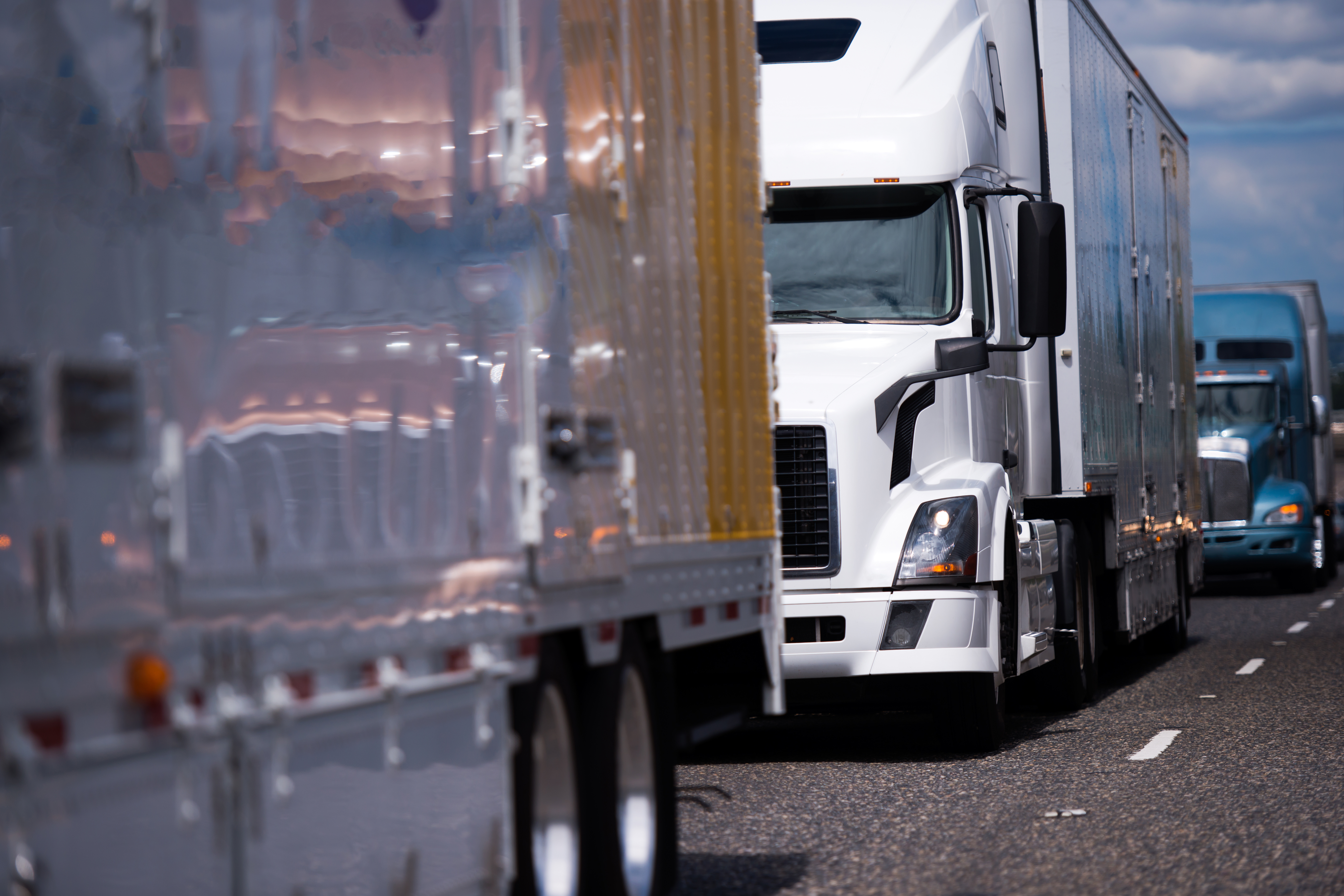
Fleet Washing Tools
Written by Diane M. Calabrese | Published October 2024
Sixty-eight percent is a sizeable share of anything. It happens to be the share of goods transported around the United States by trucks.
Some 13 million trucks—approximately 2.9 million of them semis (18-wheelers)—get the job done. (To sample dazzling data on just how much trucks mean to the U.S. economy, see the May 17, 2024, column by Scott Elgin at TruckInfo.net.)
The economy depends on trucks. No, trucks have not supplanted boats. But the word “fleet” derives from the Old English for “float.” Thus, fleets of trucks are aligned in more ways than one with boats.
Trucks incorporate components that get the attention of the Environmental Protection Agency (EPA), components such as brake fluid, battery acid, motor oils, fuels, and lubricants. The EPA keeps a watchful eye on trucks.
Washing a truck involves not only getting it clean, but also reducing (or eliminating) any impact on the environment from the wastewater and residues removed from the truck.
The National Pollutant Discharge Elimination System (NPDES), which is under the purview of the EPA, requires states to set goals that limit and keep reducing pollutants. The reporting schemes of the states are aggregates of data states require from their subregions.
Permitting is the mechanism that keeps the NPDES gears moving. In many places a fleet washer will require its own permit or must demonstrate that its washing operation falls under the umbrella of another permit holder.
As regulations become more stringent, the wash water used for cleaning fleets correspondingly becomes more likely to need an oil/water separator, biosystem, evaporators, and so on. In other words, scrutiny as well as industry concerns are spurring innovation in fleet washing tools and methods.
Selecting chemicals with care on the front side can, of course, ease cleanup on the back side. For instance, chemicals with quick-release surfactants help at wash-water pools because the oils and grease residues come to the surface (for treatment) much faster. Ideally, cleaning wastewater so that it can be recycled and reused maximally on site is the future. Any fleet-washing tool that carries us toward the goal will be incorporated as an important part of the washing process.
“Less is more” applies. Tools for fleet cleaning that minimize the amount of water used also move the industry forward to an environmentally sustainable place.
Waste has a way of accumulating—something we each realize whenever we take out the trash for its regular pickup and haul away. A 2009 EPA study in Federal Way, WA, resulted in some astounding numbers for waste from vehicle washing. The tally for a year included 190 gallons of gasoline, diesel, and motor oil; 14 pounds of dissolved copper; and 60 pounds of ammonia.
That’s the short list. But we get the idea of how compounds we would not want to send to surface waters accumulate.
Our industry is firmly committed to best practices to meet all provisions stemming from the Clean Water Act of 1972. Moreover, no one wants to contribute just a little waste to a multiplier effect: Federal Way is only one city among the more than 19,500 incorporated cities and towns in the nation.
Suppliers and manufacturers of fleet washing equipment know that meeting waste reduction and recycling goals is good for the environment and the economy.
Where are we at in 2024? In the next section, we get some answers from someone deeply immersed in the sector.
PERSPECTIVE FROM CHAD REIFFER AT HYDRO-CHEM SYSTEMS INC.
Chad Reiffer, distribution program manager at Hydro-Chem Systems Inc. in Caledonia, MI, answers some questions to help us assess the status and the future of fleet washing.
Cleaner Times: Is there a fleet-washing tool (mechanical, digital, or chemical) introduced in the last three years that has significantly streamlined fleet washing?
Reiffer: For manual fleet washing tools using pressure washers, the last three to five years have seen a rise in streamlined chemical application equipment. Specifically, interest level and sales of two-step guns and chemical remote systems with higher pressure downstream capabilities have risen dramatically. While much of this technology has existed for several years, the increased visibility and availability afforded by YouTube, Facebook, and online forums has boosted the interest level of fleet washers and fostered new development of this technology.
These tools enable fleet washers to apply detergents with higher pressure without the need to upstream chemicals, reducing wear and tear on equipment. Two-step guns and remote systems also streamline fleet washing by switching between different detergents using instant valves or wireless controls. In doing so, the fleet washer could significantly improve their efficiency while reducing the need for additional labor costs, multiple pressure washers, etc.
For automated fleet washing equipment, technology has continued to develop in recent years, allowing for large volumes of fleet vehicles to be cleaned in a matter of minutes with virtually no labor costs. Automatic fleet washing systems have also been available for decades, but advancements in recent years have been focused on improved wash optimization, increased efficiency of detergent application, water consumption and reclamation, and extending the lifespan of wash equipment.
Cleaning chemistry constantly evolves as well with new formulations, raw material composition, and bulk or pre-mixed packaging styles. External factors in the transportation industry such as new vehicle styles, cleaning/ sanitizing regulations, and the state of the economy all impact fleet washing. Chemicals and equipment tools must continue to evolve to provide fleet washers with high performance technology that improves results, lowers costs per wash, and increases output.
Cleaner Times: Which is the one fleet-washing tool currently available that every business that does fleet washing should have?
Reiffer: Knowledge. Utilizing training resources such as YouTube, Facebook groups, and industry trade shows and networking with fellow washers are incredible tools for all fleet washing businesses.
Depending on the fleet washer’s experience, operational needs, scale/ scope of business, and level of services offered, the tools may vary. We have a blog which breaks down a variety of tools and equipment for various fleet washing applications.
[Among the many educational blogs at the website of Reiffer’s company is an excellent primer authored by Terry Craycraft and titled “The Ultimate Guide to Washing Your Semi Truck.” See https://blog.hydrochemsystems. com/how-to-wash-semi-truck.]
For someone just starting a fleet washing operation or cleaning a few vehicles, a pressure washer, water source, chemical application equipment
(soap injector, foamer, pump sprayer), detergents, and brush will get the job done. As the scale/scope of the business changes, higher GPM pressure washers, hot water capabilities, multiple machines, detergent switching equipment, water recovery systems, and increased water capacity becomes more crucial.
Cleaner Times: What should we have asked?
Reiffer: Due to the diverse nature of fleet vehicles, equipment styles, and environmental factors (temperature, weather, type of road film/debris), not all fleet washing processes are created equal nor will they perform identically for every wash every time.
Fleet washers must understand the impacts of cleaning variables and how they affect their washing. Factors such as water quality, temperature (water, air, and surface temps), cleaning pressure, dwell time, detergent strength, dilution rates, and vehicle conditions/ wash frequency will all vary and impact performance and efficiency.
Air And Water
A clean vehicle is a safer vehicle. Its windows provide maximum visibility. Lights project optimal illumination. And there’s no debris, caked-on dirt, or ice to add to weight or instability.
Truck washing will continue to be part of a good fleet management program. Water will be used, and the EPA will be assessing the procedures and results.
Yet in 2024 when the EPA refers to its “Clean Trucks Plan” (originated in 2021), the focus is on air pollution. Rules are multiplying quickly, and the goal goes well beyond what we now know are the interim benchmarks reducing emissions that contribute to smog and soot. The goal is to achieve greater application of zero-emission vehicles.
The money the federal government is putting into projects that move toward electric vehicles is enormous. Our readers know the progress of the zero-emission goals in California. The goals in the Golden State are the template for the nation.
In April 2024 the Federal Highway Administration (FHWA) announced that almost $150 million of $400 million expected had been awarded to enable certain states to replace gas- and diesel-powered vehicles used near America’s ports. The replacements are to be EVs.
Niche funding—grants—programs of many sorts are being carved from money in the Inflation Reduction Act (IRA) of 2022. Much of the funding relates to projects that reduce emissions of gases into the atmosphere. And EVs are receiving a great push with some of the roughly one trillion dollars in the package. Most of the allocations from the IRA will be made in support of climate initiatives, including the explicit one of reducing carbon emissions by 40 percent by 2030. The ongoing and gradual shift toward EVs will reduce much of the soiling that must be countered with washing. And it will certainly reduce the amount of waste from gasoline and diesel that must be factored into wastewater handling. But fleets will still have to be washed.






